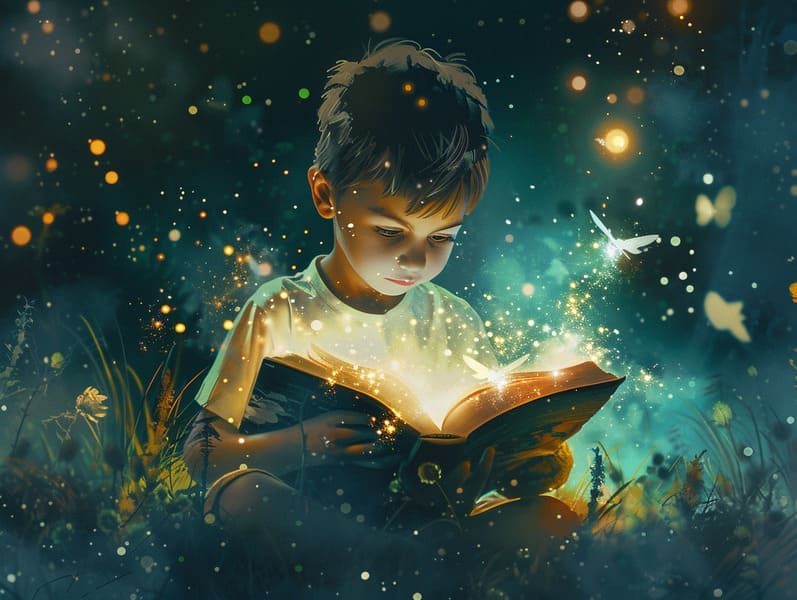The Evolution of Timeless Fairy Tales and Their Unchanging Beauty.
The Evolution of Timeless Fairy Tales and Their Unchanging Beauty.
Blog Article

Fairy tales for kids have historical significance. These narratives have been narrated from one generation to the next long before they were ever transcribed. They came from a variety of societies, including Middle Eastern traditions. They were initially disseminated among mature audiences, often carrying themes and messages relevant to the societal norms and beliefs of the time.
Jacob and Wilhelm Grimm, Jacob and Wilhelm (the Grimm brothers), were among the first to collect and release many of these beloved tales. Their published works, "Grimm's Fairy Tales," included stories like "The Story of Cinderella," "The Story of Hansel and Gretel," and "Schneewittchen," which have since become mainstays in the world of famous fairy tales. Similarly, Hans Christian Andersen's magical stories, such as "The Little Mermaid," and "The Story of the Ugly Duckling," have floated into hearts worldwide, ensuring their place in the pantheon of treasured fairy tales.
Though they are centuries old, these tales remain as meaningful as ever, especially as bedtime stories for kids. These delightful tales are now available in multiple formats, including artistically illustrated books, whimsical animations, and digital storybooks.
Their ongoing significance can be traced to several fascinating points:
Key Lessons: Ancient fairy tales often impart important moral lessons. Narratives like "The Tale of the Boy Who Cried Wolf" teach the significance of honesty, while "The Story of the Tortoise and the Hare" show the virtues of steadfastness and humility. These narratives offer children clear distinctions between correct and incorrect, shaping their moral compass in a soft yet meaningful way.
Warmth and Understanding: Fairy tales frequently include heroines facing problems and hurdles, fostering young listeners to resonate with their struggles and root for their triumphs. For instance, "Beauty and the Beast" shows us the necessity of seeing beyond looks to know the true nature of a person, fostering warmth and knowledge.
Cultural Knowledge: Many old fairy tales are infused with the cultural contexts from which they arose. Immersing in these stories can provide informative snapshots into different backgrounds, fostering a sense of cultural awareness and knowledge.
Imagination and Innovation: The extraordinary elements in fairy tales—mythical entities—unleash children’s creativity. These tales lead readers to supernatural realms, unleashing inventive dreams and a sense of amazement that lasts a lifetime.
Traditional fairy tales are not only entrancing but also instructive. They provide alluring tools in fostering various mind and heart abilities in little ones. When fairy tales are read aloud, they develop language development by introducing new terms and meanings and intricate sentence structures. This practice also develops listening skills and attention, as little ones track the narrative, enthusiastic to see what happens next.
Furthermore, analyzing the themes and characters of old fairy tales can nurture evaluative skills and problem-solving abilities. Young ones are guided to spot patterns, make predictions, and know cause and effect. These deliberations also support kids speak out their thoughts and feelings, boosting their emotional intelligence.
In today’s cyber age, the existence of online fairy tales has made these stories more within reach than ever. Websites and programs present huge assortments of famous fairy tales that can be browsed or heard anytime, anywhere. Fairy tales narrated are particularly sought after, sharing an engaging way for little ones to relish these magical stories. Audio stories and spoken videos carry characters and settings to life, often complemented by charming soundtracks and musical scores that intensify the tale-telling adventure.
The timeless allure of old fairy tales lies in their ability to transform to the present while maintaining their core values. Contemporary takes of these fairy tales often highlight more different figures and modern settings, making them meaningful to today’s audience. However, the central morals of spirit, generosity, and fair play remain unchanged, continuing to touch children of all ages.
Timeless fairy tales also offer a sense of solace and comprehensibility. They make accessible a organized narrative with a distinct beginning, middle, and end, often coming to a close with the solving of conflicts and the triumph of good over evil. This regularity can be soothing for little ones, distributing a sense of invariability in an always shifting world.
Timeless fairy tales continue to fascinate and guide new generations, maintaining their mystique and impact in modern society. As bedtime stories for kids, they make accessible a perfect blend of delight and instruction, backing moral values, empathy, and creativity. The proliferation of internet fairy awesome site tales and the well-received status of fairy tales recited secure that these old narratives remain reachable to new generations.
By keeping and making known these stories, we continue to cherish the rich tapestry of cultural heritage and cultural heritage. Whether you are accessing a richly illustrated book, accessing a web collection, or listening to an narrated book, the radiance of classic fairy tales is always within reach. These stories remind us of the undying essence of fairy tales and its ability to bind us across eras and regions.
No matter if you are viewing a vibrantly illustrated book, delving into a virtual collection, or listening on an read-aloud story, the radiance of classic fairy tales is always within reach.
These stories convey of the unfading magic of tales and its ability to tie us across time and space, forming a connection that fascinates and enlightens alike.